The invisible waterways of the desert have a lot to teach us, if we slow down and listen
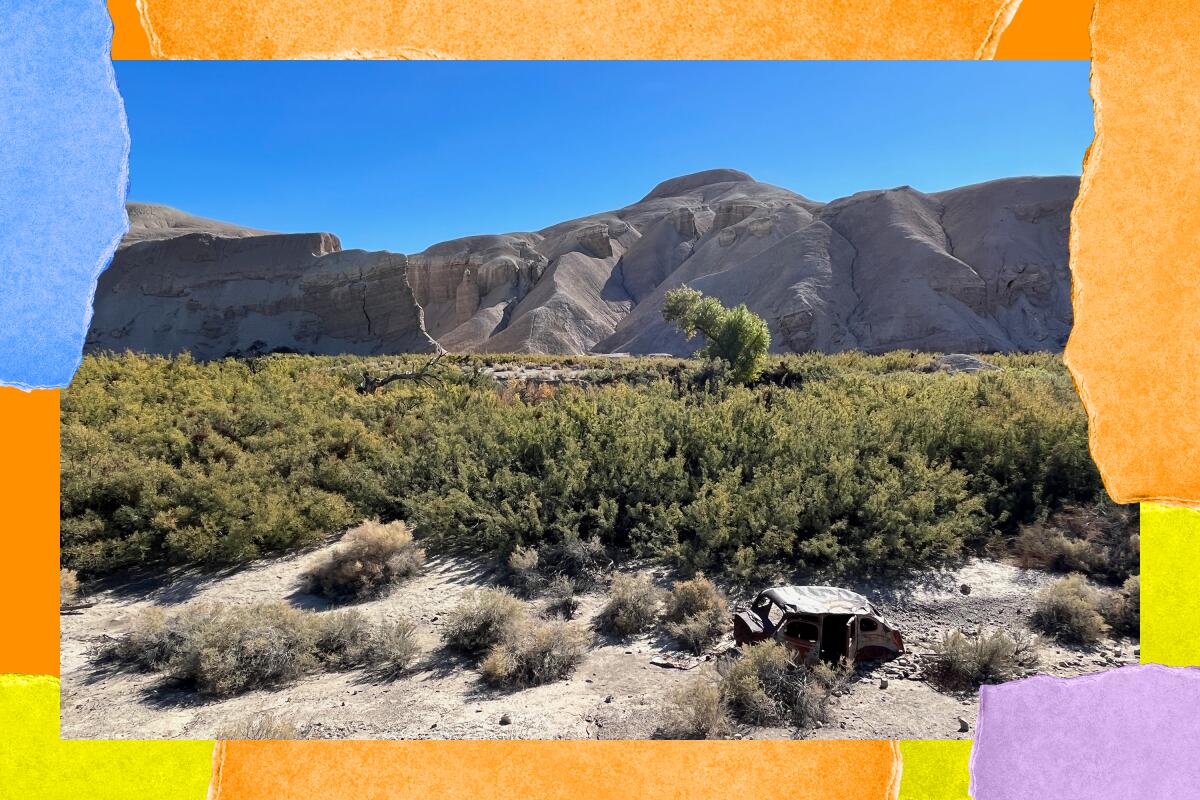
- Share via
I know a lot of people think of deserts as big, empty, lifeless wastelands — that’s one of the reasons it can be tough to get folks to care about protecting them. But when I moved to Southern California from New England, my desert enchantment was immediate and deep.
One of the things that struck me most about exploring the deserts here was that the slower I went, the more I saw. Sure, if you’re speeding to Vegas on the 15, the Mojave is going to seem pretty nondescript and forgettable. But on foot, you notice the intricate shadows cast by the ancient rock formations, the hardy pockets of life that persevere quietly and — perhaps most interesting — you see the influence of water just about everywhere.
Last week, to try something different for Thanksgiving, my husband and I hopped into a tricked-out van from Roadsurfer and hit the pavement for a slow, grand desert tour. Some of the most spectacular landscapes we explored were those created by mostly invisible waterways.
Take the Amargosa River, which flows for 185 miles and drains a 5,500-square-mile basin in Nevada and California before feeding the aquifer remnants of ancient Lake Manly in Death Valley. It’s the seventh-longest river in California, but you could be forgiven for not noticing it, since it spends almost all its time underground. Its water provides habitat for the improbable Devil’s Hole pupfish, and where the river is forced close to the surface, it creates swampy wetlands in the middle of searing deserts that provide rest stops for migratory birds and homes for frogs and the Amargosa vole. South of Tecopa, the Amargosa rises fully above ground, and the desert explodes in a nearly neon ribbon of green, with a nearby tributary providing enough water for a date ranch. It has a small (and generously named, if we’re being honest) waterfall. It even has a Wild and Scenic River designation.
The landscape created by the Amargosa River is so unique, there is a push to declare the region a national monument, but these kinds of stunning, Alice in Wonderland moments can be found in desert hikes all over the Southwest. Maybe it’s stepping from the hot sunshine into the cool, breezy shadows of a slot canyon with dry waterfalls, like Mosaic Canyon. Maybe it’s watching ocotillos in Anza-Borrego bloom on a mad growth spurt after a winter rain. Maybe it will be taking a 4x4 into Afton Canyon to see another underground river — the Mojave — emerge at the surface in dense groves of vegetation. Or perhaps you’ll hear the distant sound of bighorn sheep locking horns above you while the Whitewater River provides gentle white noise on the desert floor.
The next time you’re on a desert hike, remember to slow down. Water is all around you if you know where to look. And, of course, don’t forget to pack plenty of your own to drink too.
5 things to do

1. Bike South L.A. In a recent weekend edition of “The L.A. Report” podcast, KPCC reporters took to a new bike lane and wondered why L.A.’s cycling infrastructure is so bad (spoiler: lots of reasons but mostly cars). Imagine a better L.A. this Sunday, as CicLAvia celebrates its South L.A. route with a 7.25-mile-long car-free park space between Exposition Park and Watts. The event is free and runs from 9 a.m. to 3 p.m. Get more info on the route and on some local gems worth checking out along the way.
Get The Wild newsletter.
The essential weekly guide to enjoying the outdoors in Southern California. Insider tips on the best of our beaches, trails, parks, deserts, forests and mountains.
You may occasionally receive promotional content from the Los Angeles Times.
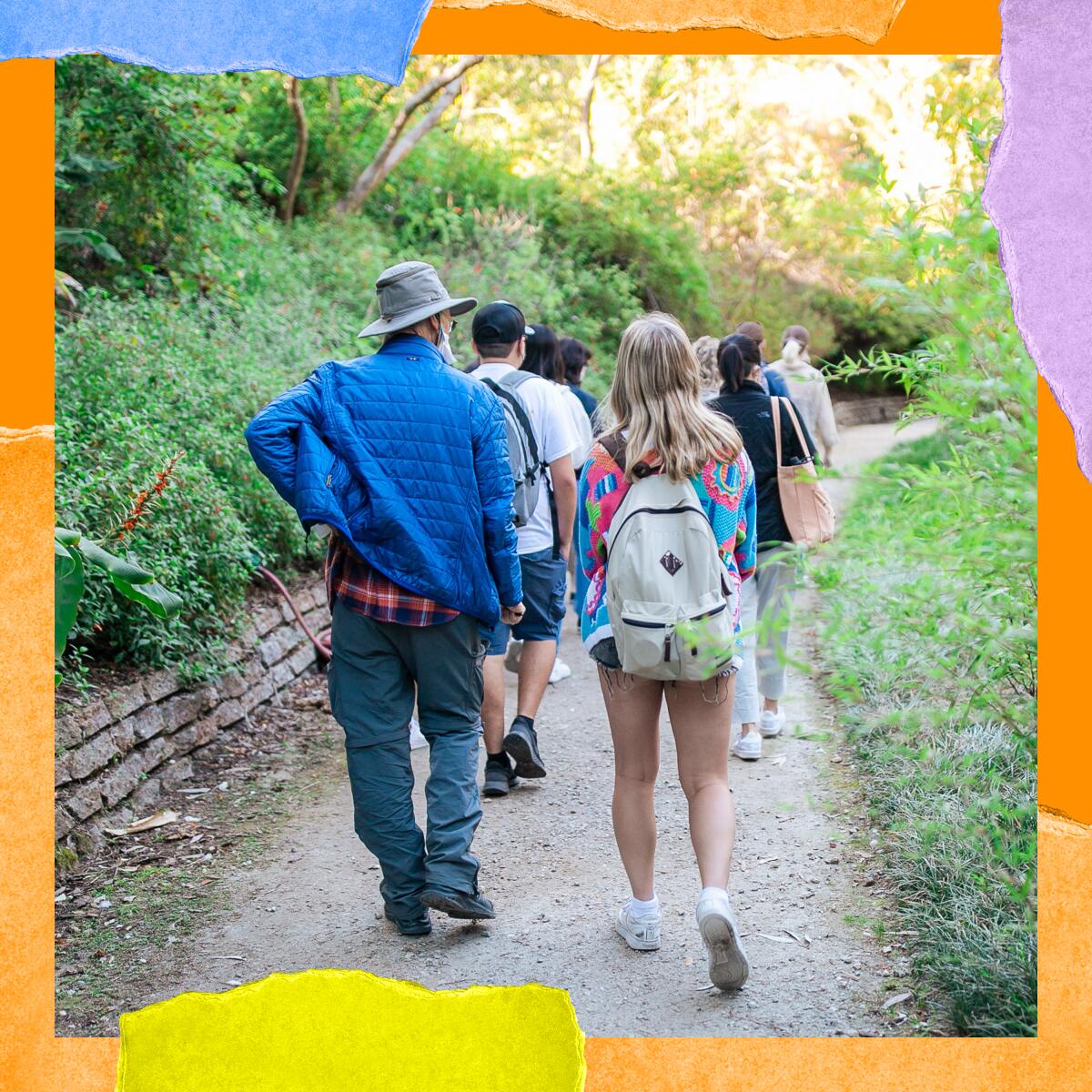
2. Explore UCLA’s botanical garden. If you don’t live in Westwood or attend UCLA, you may not know the campus has a 7.5-acre botanical garden. The Mildred E. Mathias Botanical Garden also functions as a research facility and outdoor classroom, and on the first Saturday of each month you can get the inside track on all its leafy beauty through a free hourlong tour. Reservations are required. The next tour is Saturday at 1 p.m.
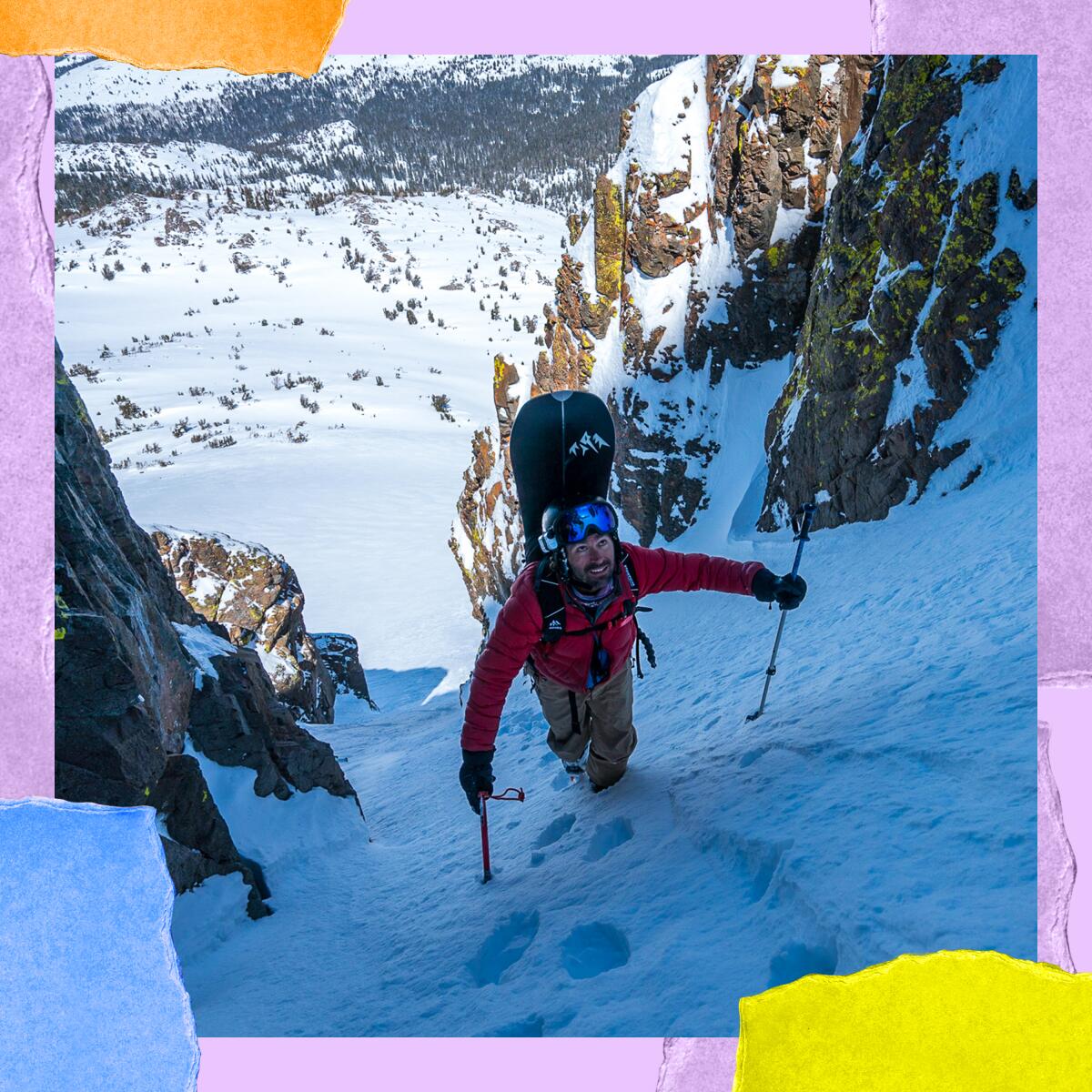
3. Get your winter stoke up. For snow-sport inspiration from some of the world’s best athletes, you’ll want to tune in to the 17th Alpenglow Sports Winter Speaker Series, which kicks off at 7 p.m. Dec. 8. Veteran snowboarder Jeremy Jones will be presenting a never-before-seen show based on his new book, “The Art of Shralpinism.” See the show in person at Alpenglow Sports in Tahoe, or tune in online for free. There’s also a raffle for more than $10,000 in winter gear. The full series runs through March.
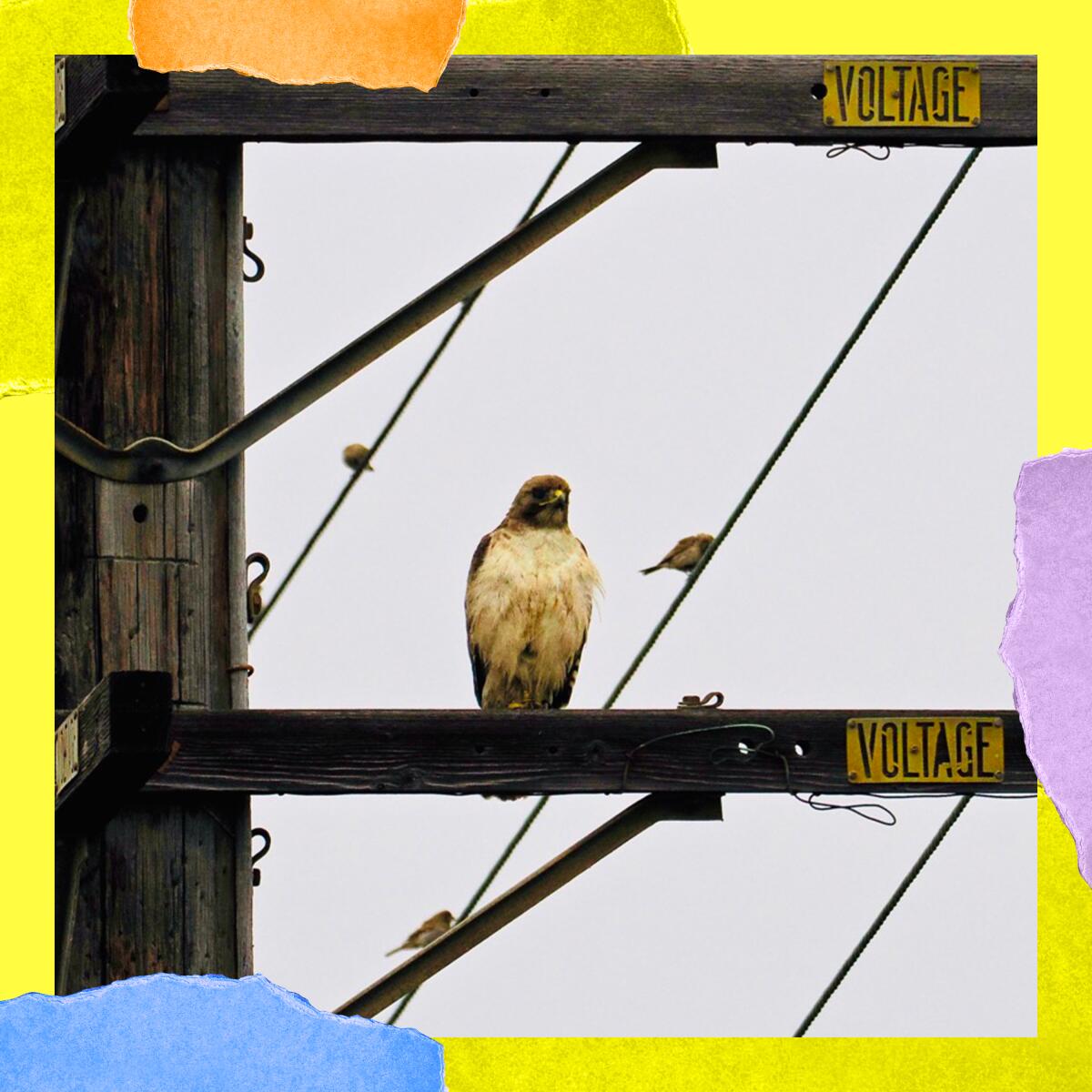
4. Bird-watch on the O.C. border. Enjoy a casual nature walk through the Los Cerritos Wetlands on the banks of the San Gabriel River between Seal Beach and Long Beach. This is a guided tour led by Tidal Influence, an ecological consulting firm working to further restore the wetlands. You’ll learn about the importance of the area, keep an eye out for the raptors and other birds that nest there, and enjoy a lovely morning by the coast. The event, which begins at 8 a.m., is free, but reservations are required. The parking gate opens at 7:45 a.m. Saturday, and the tour ends at 10 a.m. No latecomers admitted.
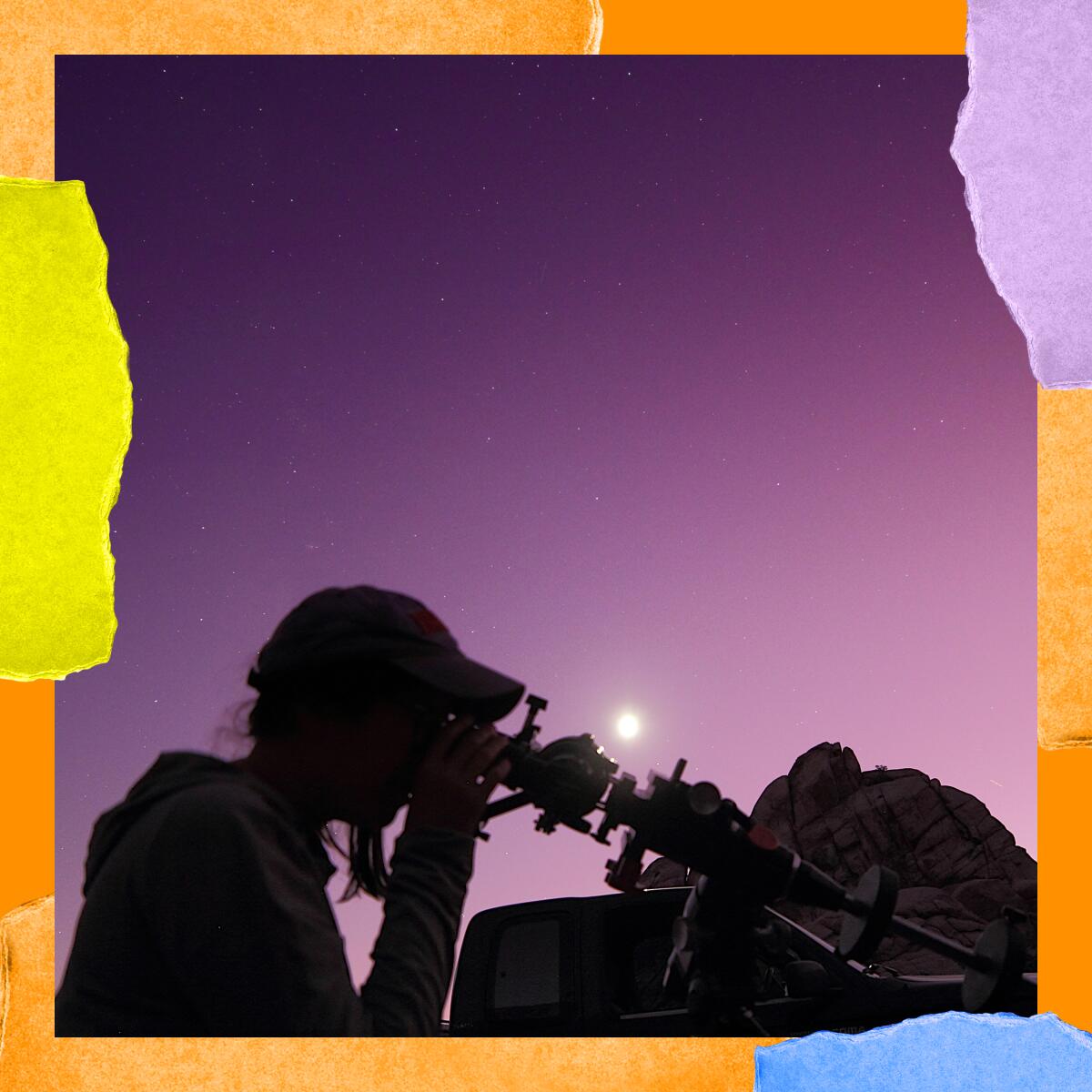
5. Stargaze in the desert. If you visit a desert and don’t stick around for the night sky, you’re really missing a huge part of what makes these places special. Join “Starman Steve” from the Twentynine Palms Astronomy Club and Mojave Desert Land Trust Education Program Manager Mary Cook-Rhyne to learn about night sky conservation. Dress in warm clothes to gaze at the stars and new moon through telescopes at 6 p.m. Tuesday at the Mojave Desert Land Trust HQ in Joshua Tree. The event is free, but reservations are required.
The must read
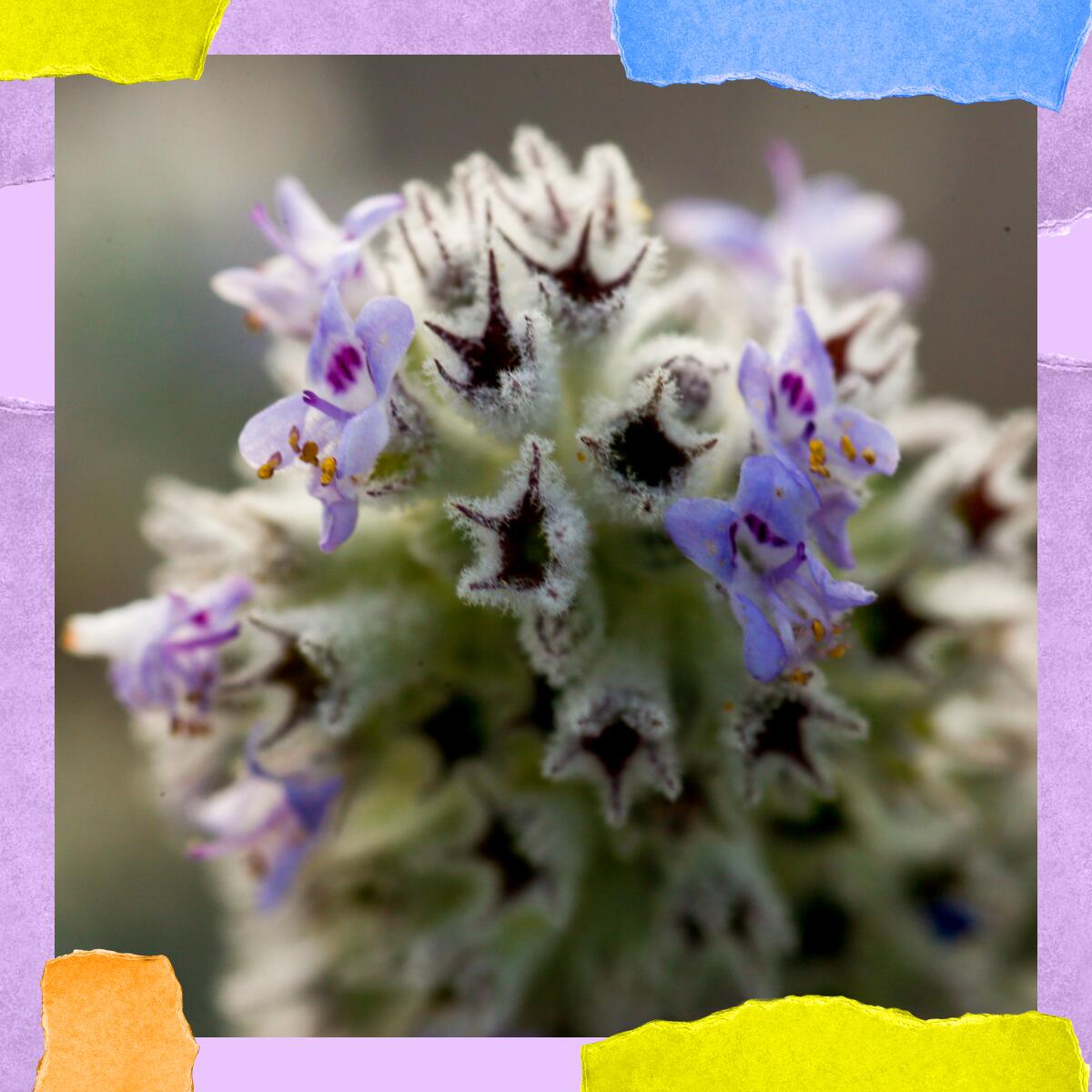
Winter is the best time to put new California native plants in the ground. If you’re looking for inspiration, Jeanette Marantos’ piece in the L.A. Times Plants section on fragrant natives is truly wonderful. She consulted a panel of native plant experts and enthusiasts about their favorite fragrant species, and both the resulting top 10 and honorable mentions are spot-on. Most of these plants are fairly easy to grow, too — just remember: right plant, right spot. As for my picks? Well, I’ll just note that I have tattoos of California sagebrush, black sage, white sage and hummingbird sage … but creosote, wooly bluecurls, desert lavender and coyote mint are all winners too. Now, if you’ll excuse me, I need to go put my face in some sage scrub.
Check out “The Times” podcast for essential news and more.
These days, waking up to current events can be, well, daunting. If you’re seeking a more balanced news diet, “The Times” podcast is for you. Gustavo Arellano, along with a diverse set of reporters from the award-winning L.A. Times newsroom, delivers the most interesting stories from the Los Angeles Times every Monday, Wednesday and Friday. Listen and subscribe wherever you get your podcasts.
The red flag
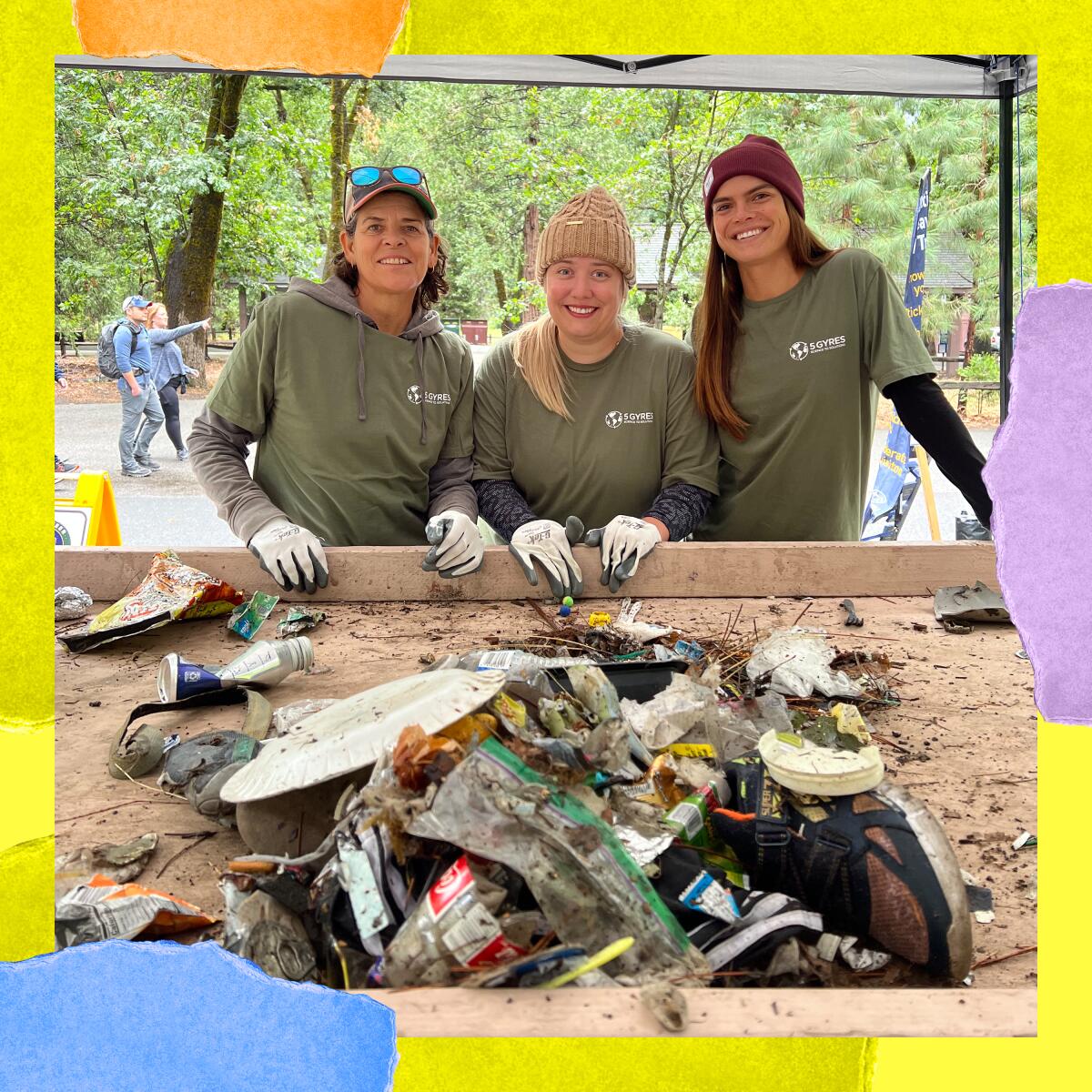
Nobody likes seeing trash in our parks and green spaces, but places that get a lot of visitation often get a lot of garbage too. Yea, humans! Last year, the local nonprofit 5 Gyres Institute asked travelers to report litter and trash on their park visits, but this year they were able to get down and dirty at the Yosemite Climbing Assn.’s five-day annual Yosemite cleanup event, Facelift. Volunteers picked up more than 14,000 pounds of trash, a mountain of data that helped 5 Gyres gain a clearer picture of the types left in the park: Almost 70% is plastics. The Department of the Interior issued an order last year to phase out single-use plastics on all federal lands by 2032, and legislators in Congress are trying to codify that policy into law. Read more about this project in the San Francisco Chronicle and dig into the nationwide Trashblitz data report for more context and next steps.
Cool stuff
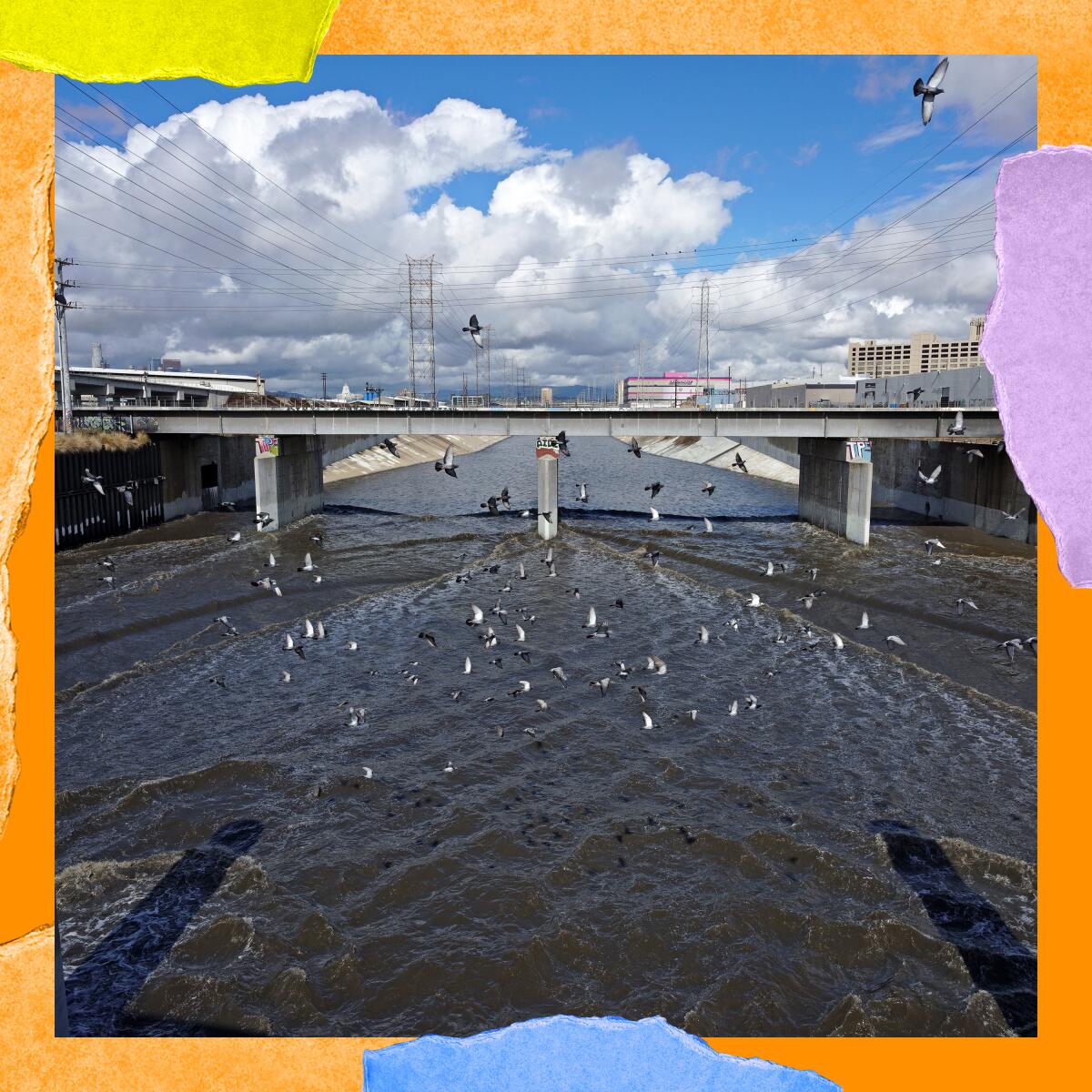
In earlier times, engineers in California looked at water as something to be held and stored in above-ground reservoirs created by flooding canyons (See: Hetch Hetchy) or something to be flushed into the ocean as quickly as possible (See: Los Angeles River). Now, in a hotter, drier world where deeper wells in places like the San Joaquin Valley are causing the earth to literally sink, scientists are developing ways to spot ancient river channels called paleovalleys, which could help quickly refill depleted aquifers with re-directed floodwater in the future. Times staff writer Ian James talks about some early mapping being done and the potentially promising tech that could follow.
P.S.
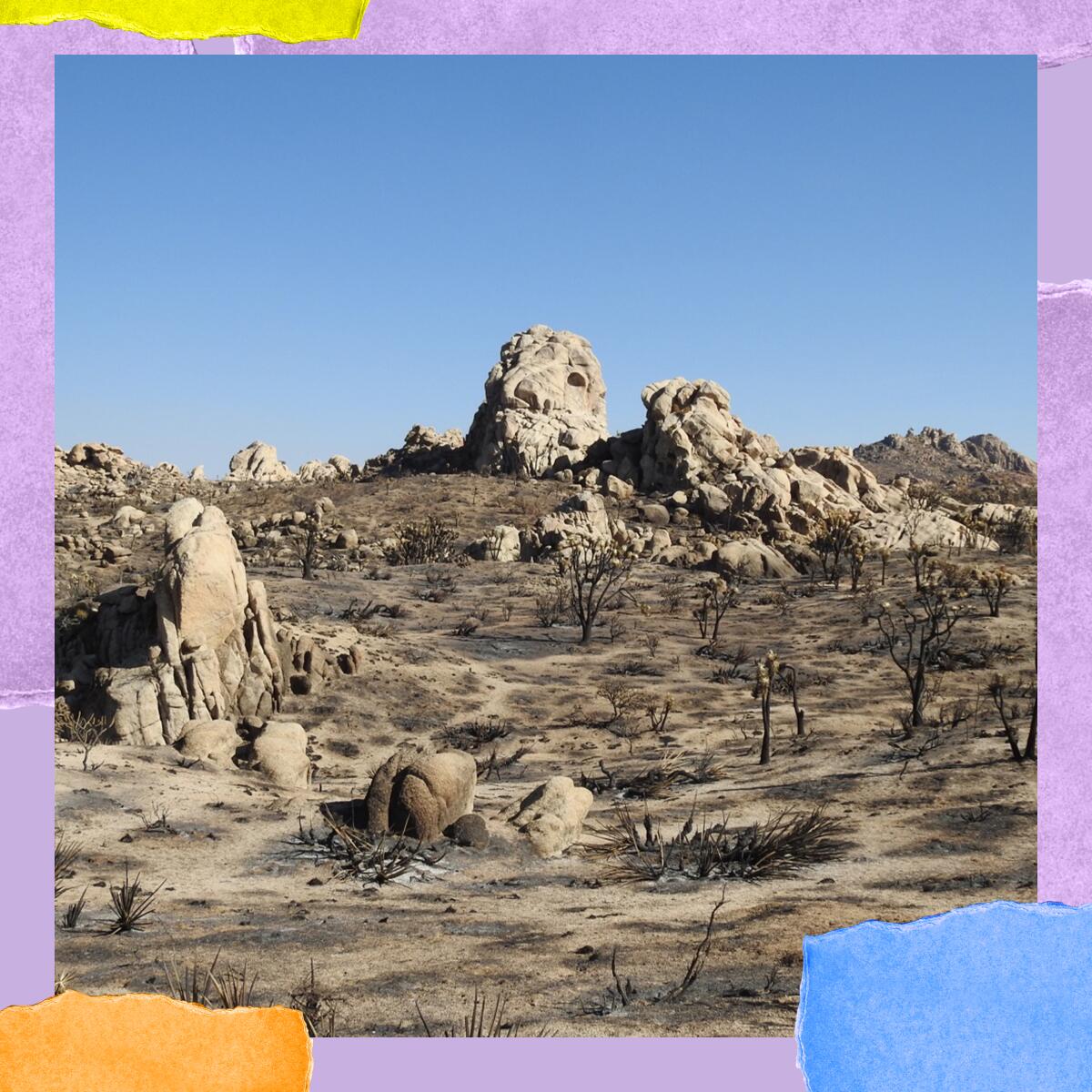
If you didn’t get enough desert inspiration in this week’s newsletter, I’ll direct you to Meg Bernhard’s fantastic essay in the New York Times Magazine. A native of San Diego County, she went to the Mojave National Preserve earlier this year to replant Joshua trees destroyed in the 2020 Dome fire. She also has a deep case of desert enchantment, and when she returned to the reforestation site recently, she got some glimmers of much-needed hope.
For more insider tips on Southern California’s beaches, trails and parks, check out past editions of The Wild. And to view this newsletter in your browser, click here.
Sign up for The Wild
We’ll help you find the best places to hike, bike and run, as well as the perfect silent spots for meditation and yoga.
You may occasionally receive promotional content from the Los Angeles Times.




